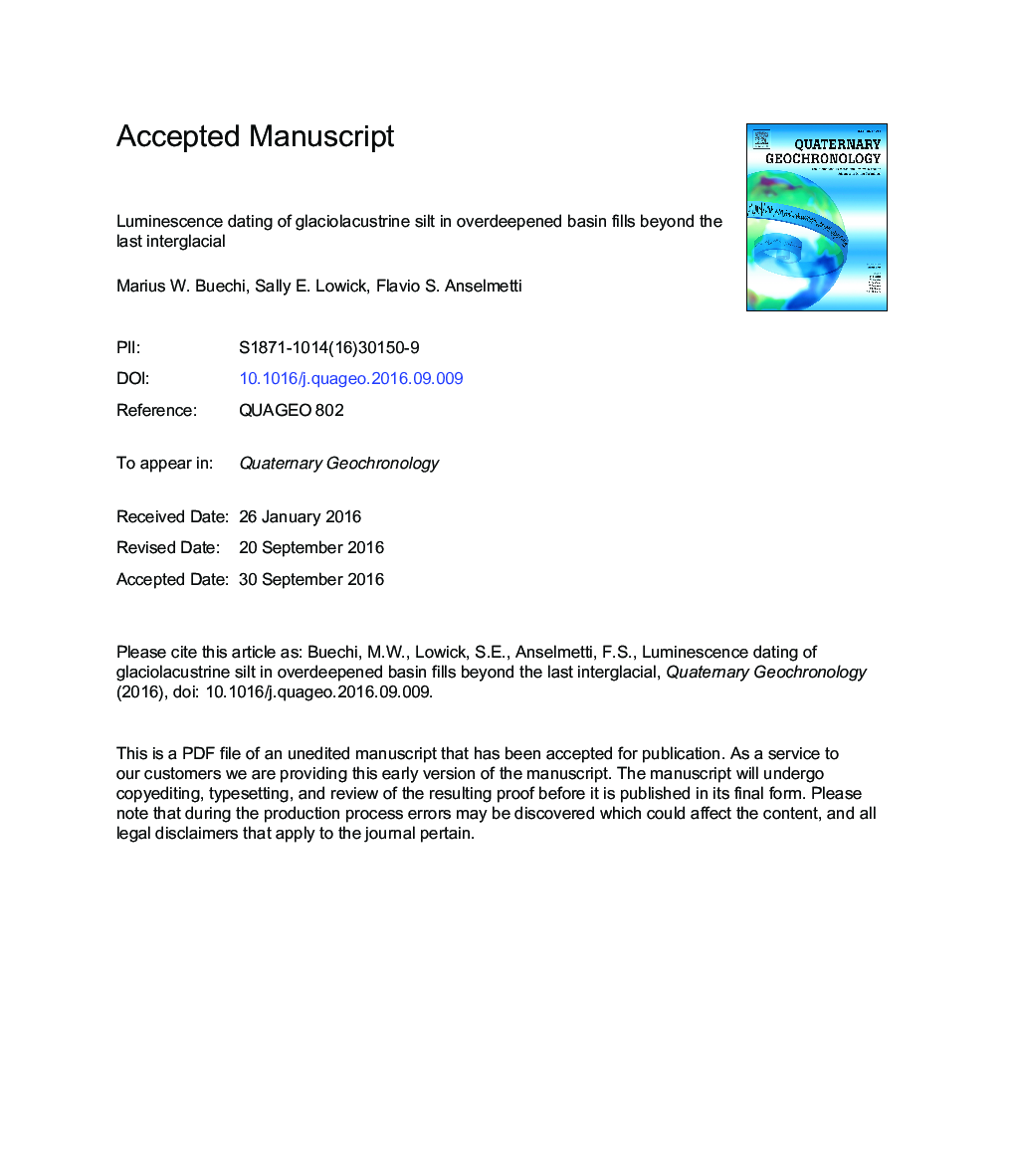| Article ID | Journal | Published Year | Pages | File Type |
|---|---|---|---|---|
| 6442459 | Quaternary Geochronology | 2017 | 37 Pages |
Abstract
OSL and IRSL dating are applied to samples from a 152Â m-long drill core to constrain the timing of three glaciolacustrine depositional periods within the infill of an overdeepened bedrock trough in the Lower Glatt valley, N Switzerland. The characterisation of the dose-response suggests that the polymineral IRSL50 and pIRIR180/225 signals are close to saturation, while quartz OSL ages are within the range of reliable dating. The demarcation of the upper quartz OSL dating limit, however, remains challenging. Dose-recovery tests performed with long storage periods were used to investigate the reliability of the high region of the dose-response curve. They suggest an upper limit for reliable dating of â¼400Â Gy for these samples, which was considerably lower than the commonly used 2D0 criterion. Lifetimes were calculated for the quartz OSL and the thermal stability of the signal is not considered as problematic for the determined ages. Allowing for a contribution from inherited dose due to partial bleaching, places the infill of the overdeepened valley within the penultimate glacial cycle (MIS6).
Related Topics
Physical Sciences and Engineering
Earth and Planetary Sciences
Geochemistry and Petrology
Authors
Marius W. Buechi, Sally E. Lowick, Flavio S. Anselmetti,
